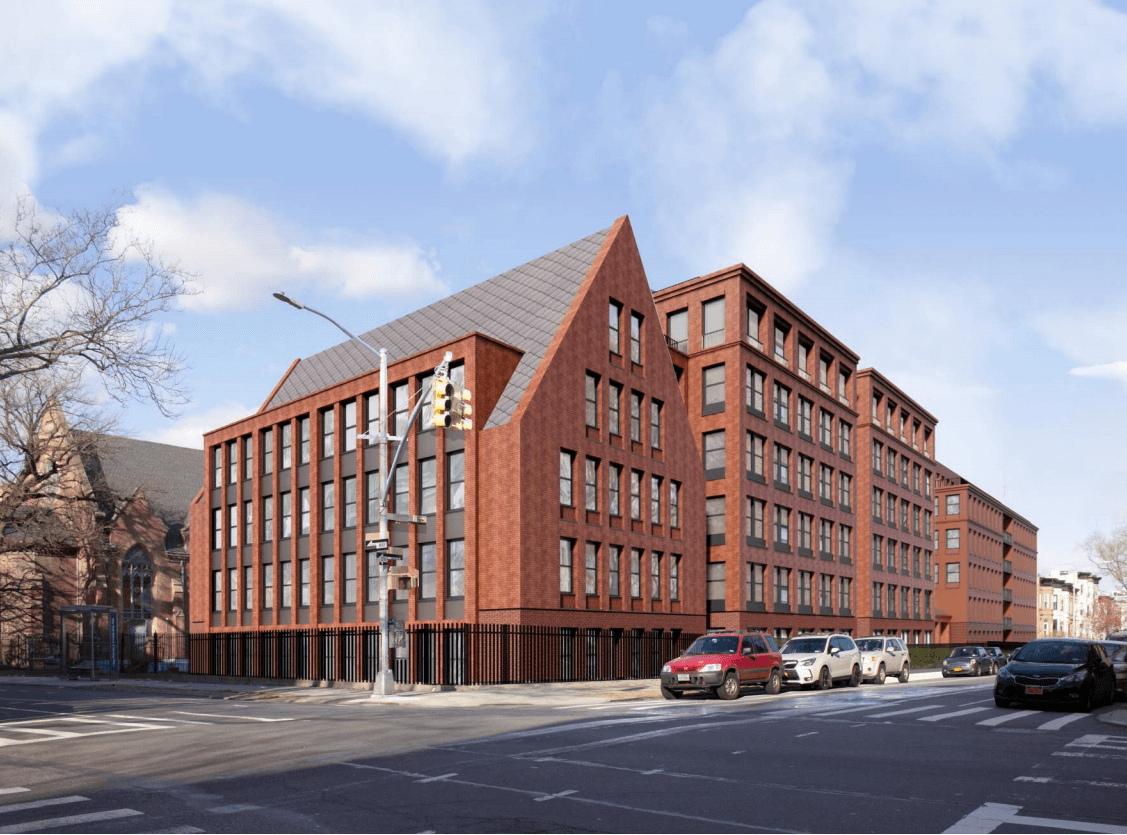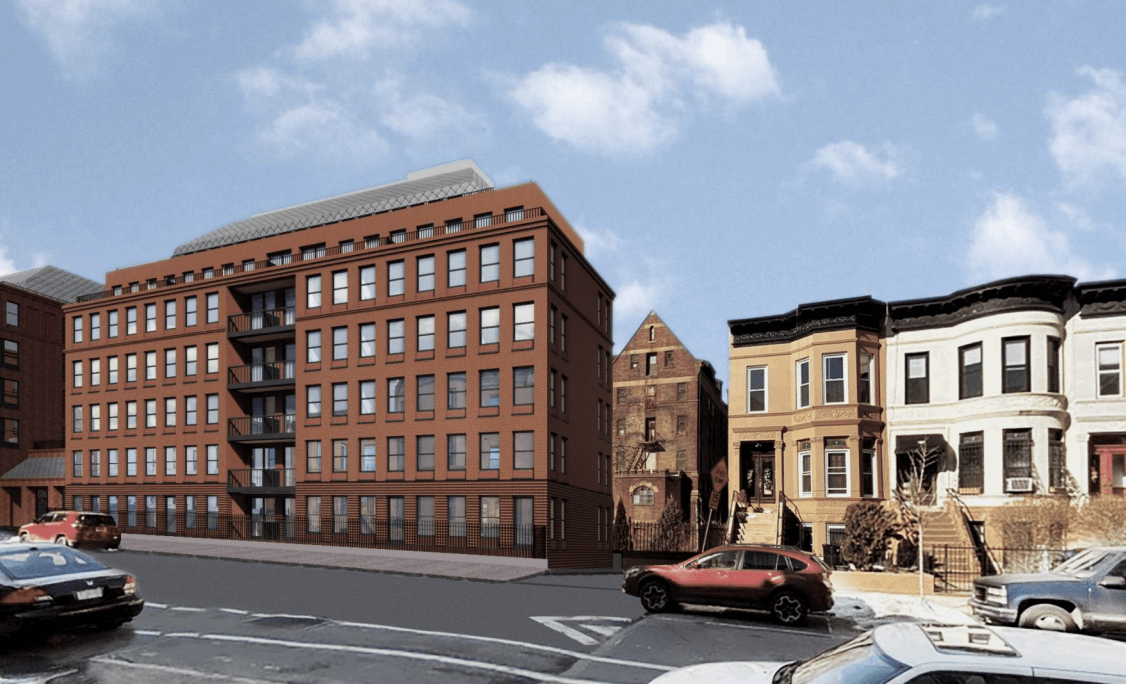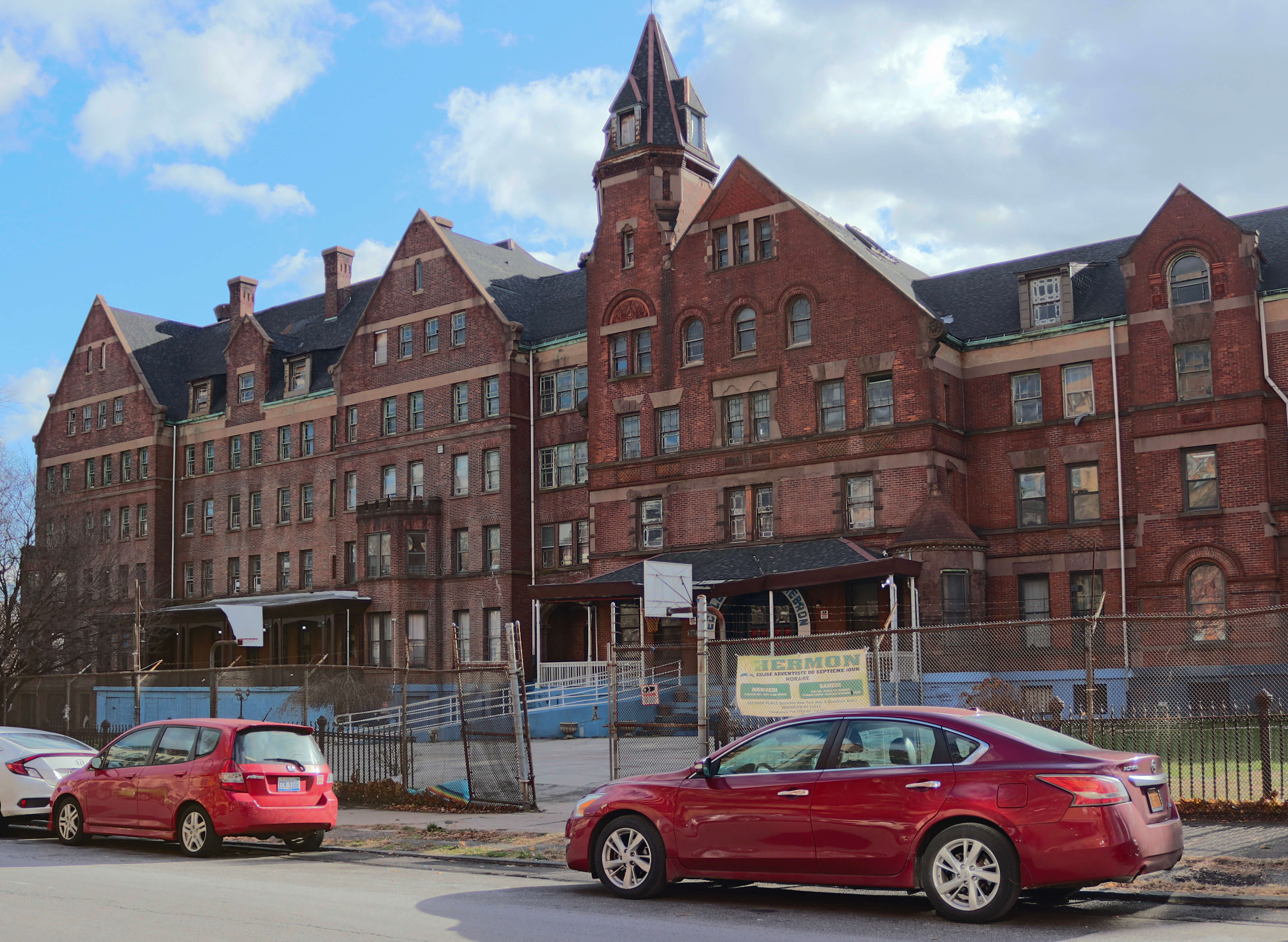Locals File Suit to Halt Development at Landmarked Hebron School in Crown Heights
The development is widely opposed by neighbors and local politicians, who say it will destroy a key landmark that is one of the last grand Victorian institutional buildings with intact grounds in the city.

View from New York Avenue and Sterling Place. Photo by Susan De Vries
Crown Heights residents have filed a lawsuit in Brooklyn Supreme Court seeking to overturn approval of a new development project at the Hebron Church site, which they say would be out of step with the landmarked district’s historic character.
The Sterling Place Block Association is hoping their lawsuit, filed against the Landmarks Preservation Commission and real estate developer Hope Street Capital, will overturn the LPC’s approval of Hope Street’s planned seven-story residential buildings at the Hebron Seventh Day Adventist site on Sterling Place at New York Avenue. Advocates say the 1899 building is the “crown jewel” of the historic district and one of the last grand Victorian institutional buildings with intact grounds in the city.
Neighbors have been fighting against the proposed development for years, arguing that it would tarnish the integrity of the historic Hebron facility, which was built as the Brooklyn Methodist Home for the Aged and Infirm and now houses the Hebron Seventh Day Adventist elementary school. The developers plan to demolish the building’s southern addition but leave most of the historic structure intact. But advocates say it still does not belong in the neighborhood due to its height differential from the row houses that define the historic district, blockage of views of Hebron, and the green space that will disappear if the buildings go up.


Following a number of presentations, design modifications and reductions in height, the LPC approved the project last May. Michael Hiller, an attorney representing the block association, says that the approval of the modified project was in dereliction of the law by not allowing the public to comment on the redesign before its approval.
“When the commission allowed the developer to fundamentally change the core precepts of the project without allowing the public to participate in a hearing to discuss those changes, the commission broke the law,” Hiller told Brooklyn Paper. “This particular property is regarded as the crown jewel of the historic district. Not only is it a violation of the landmarks law, it’s just fundamentally wrong.”
A rep for the LPC said that the commission had carefully considered the project — and the approximately equal amount of testimony in support and against they say it received — and asked for numerous modifications, only approving it after those conditions were met.
“The application went through a robust hearing process which included many hours of testimony from the public,” said LPC spokesperson Zodet Negrón. “The Law Department will review the case.”

Hiller maintains that the supposed equity of support and opposition was a smoke screen, though, claiming in the lawsuit that the LPC ignored over 6,800 petition signatures presented by the opposition.
“This particular site is an indispensable aspect of the historic district. It’s fundamental, it’s a core property, almost a defining property,” Hiller noted. “We want the property and its landmark protected status to be more fully respected.”
Construction began in December after the LPC granted a “certificate of appropriateness.” Work was briefly halted by the city in February after neighbors complained of “seismic vibrations” and other disruptions, Patch reported, but construction has since resumed.
The project is opposed by much of Crown Heights’ elected delegation, including City Council members Chi Ossé and Crystal Hudson, Assembly members Brian Cunningham and Stefani Zinerman, and state Senator Zellnor Myrie. It was also opposed by former Council members Laurie Cumbo and Robert Cornegy and former Assembly member Diana Richardson, and got a thumbs-down from Community Board 8.
“Hebron Seventh Day Adventist Church and School complex is widely known as the crown jewel of Crown Heights,” Ossé said in a statement. “It is largely unique in the necessity of its structural and aesthetic preservation. The proposed development is opposed almost uniformly by the community and would strip the area of communal green space. It should not be built, especially without community input.”
A spokesperson for Hope Street did not respond to a request for comment.
Editor’s note: A version of this story originally ran in Brooklyn Paper. Click here to see the original story.
Related Stories
- LPC Approves Development at Hebron School in Crown Heights Despite Local Opposition
- LPC Requests Further Alterations to Revised Hebron Development Proposal in Crown Heights
- LPC Tells Developers Behind Hebron Development to Come Back With New Designs
Email tips@brownstoner.com with further comments, questions or tips. Follow Brownstoner on Twitter and Instagram, and like us on Facebook.









What's Your Take? Leave a Comment